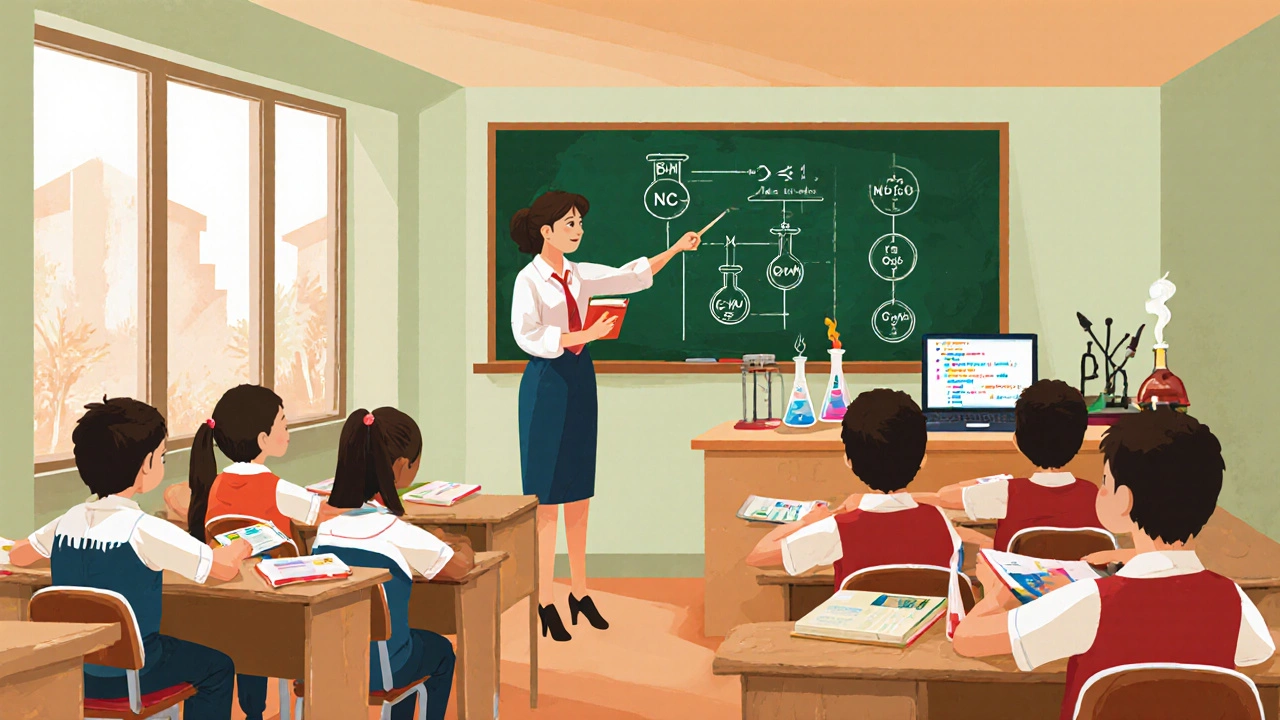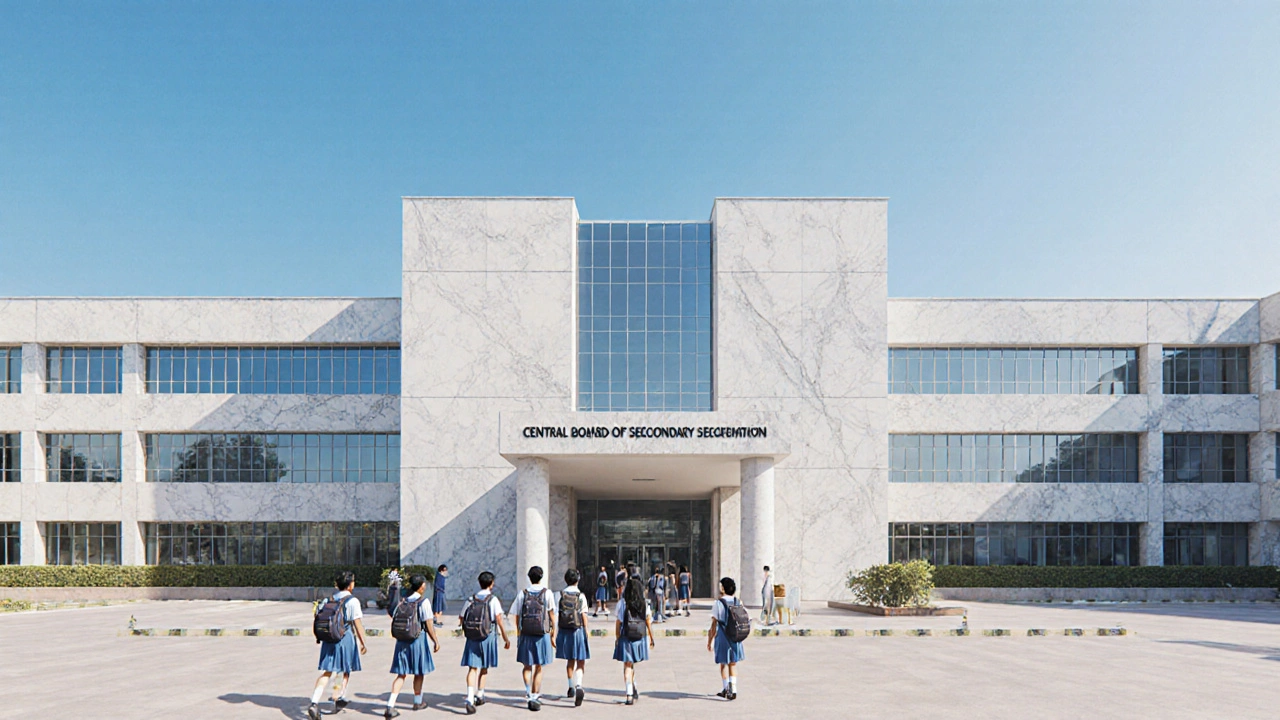CBSE Board Comparison Tool
Compare key aspects of CBSE, ICSE, and State Boards to make informed educational decisions
Central Board of Secondary Education
National-level education board
Indian Certificate of Secondary Education
Private council administered board
State Education Board
State-specific educational board
Comparison Results
When you hear the acronym CBSE is a Central Board of Secondary Education, the national-level board of education in India that conducts school‑level examinations and sets the curriculum. It’s the backbone of millions of Indian schools and the reason many students talk about ‘CBSE exams’ every year. Understanding what CBSE stands for, how it works, and why it matters helps parents, teachers, and students make smarter academic choices.
Key Takeaways
- CBSE stands for Central Board of Secondary Education, a government‑run school board in India.
- It designs a uniform syllabus for classes 1‑12, aligning with national goals and the NCERT textbooks.
- CBSE conducts two major board exams: the Class10 (Secondary) and Class12 (Senior Secondary) examinations.
- Affiliation to CBSE requires schools to meet infrastructure, faculty, and compliance standards.
- Compared with other boards, CBSE offers a more flexible assessment style and broader acceptance for higher‑education admissions.
What Does CBSE Actually Mean?
The full form of CBSE is Central Board of Secondary Education. Established in 1962 under the Ministry of Education, it functions as an autonomous body that formulates policies, prescribes curriculum, and conducts nationwide examinations. Its headquarters sit in New Delhi, and the board governs over 21,000 schools in India and abroad.
The CBSE Syllabus: Structure and Core Features
The CBSE syllabus covers subjects from mathematics and science to languages and social studies, following a competency‑based approach is built around three pillars:
- Conceptual clarity - each chapter starts with clear learning objectives.
- Application‑oriented practice - exercises focus on real‑world problems.
- Assessment readiness - periodic tests align with the board’s exam pattern.
For Classes9‑10, the board emphasizes a balanced mix of theory and practical work, while Classes11‑12 introduce subject‑specific electives like Biotechnology, Psychology, and Computer Science. The syllabus is updated every five years to keep pace with technological changes and global standards.
How CBSE Conducts Its Board Exams
Two flagship examinations define the CBSE calendar:
- Class10 Board (Secondary Exam) - held in March, this exam determines the All‑India Secondary School Examination (AISSE) scores.
- Class12 Board (Senior Secondary Exam) - held in April-May, it culminates in the All‑India Senior School Certificate Examination (AISSCE) results.
The CBSE exam pattern features a mix of multiple‑choice questions, short answer, and long answer formats, with internal assessments contributing 20‑30% of the total score for many subjects. This structure aims to reduce rote memorisation and reward analytical thinking.

Affiliation Rules: What Schools Must Do to Join CBSE
Any school that wishes to be recognised by CBSE must obtain CBSE affiliation by meeting infrastructure standards, qualified teaching staff ratios, and compliance with the board’s academic calendar. The process includes:
- Submission of an online application with supporting documents.
- On‑site inspection by a CBSE-appointed committee.
- Approval and issuance of an affiliation certificate, valid for three years.
Affiliated schools gain access to official curriculum material, training workshops, and the right to conduct board examinations.
CBSE vs. Other Indian School Boards
Parents often ask whether CBSE is better than alternatives like ICSE or State Boards. Below is a quick comparison:
| Aspect | CBSE | ICSE | State Board |
|---|---|---|---|
| Governing Body | Ministry of Education (central) | Council for the Indian School Certificate Examination | State Education Departments |
| Curriculum Focus | Conceptual & application‑based | In‑depth theoretical study | Varies by state, often region‑specific |
| Exam Pattern | Mix of MCQs, short & long answers; internal assessment | Heavier emphasis on long answers | Diverse patterns; some rely heavily on MCQs |
| National Acceptance | High - preferred by most Indian universities | Widely accepted, but less common than CBSE | Accepted regionally; may need conversion for central colleges |
| Flexibility for Outside India | Strong - many overseas schools follow CBSE | Limited overseas presence | Rarely offered abroad |
For students aiming for competitive exams like JEE or NEET, the CBSE syllabus aligns closely with the entrance‑test patterns, making it a pragmatic choice.
How CBSE Impacts Higher Education and Career Paths
Universities across India, as well as many abroad, recognise CBSE scores for admissions. The board’s emphasis on analytical skills means CBSE graduates often perform well in engineering, medicine, and commerce streams. Moreover, the CBSE results are released online in May (Class12) and June (Class10), providing a transparent snapshot of academic performance that employers and scholarship committees trust.
Beyond academics, CBSE encourages co‑curricular activities-sports, arts, and community service-through its Continuous and Comprehensive Evaluation (CCE) framework (though CCE was officially phased out in 2020, its spirit lives on in school policies). This holistic approach prepares students for leadership roles and soft‑skill‑heavy careers.

Practical Tips for Students and Parents Navigating CBSE
Whether you’re a freshman or a senior, these actionable ideas can make the CBSE journey smoother:
- Stay aligned with the official NCERT textbooks - they are the primary reference for board exams.
- Use the CBSE meaning as a reminder: the board seeks a central, uniform standard, so avoid cramming region‑specific shortcuts.
- Practice past year papers released on the official CBSE website; they mirror the exact exam pattern.
- Join any school‑run study groups; collaborative learning reinforces concepts.
- Plan revision cycles: 30‑day, 15‑day, and 7‑day sprints before the exam dates.
Future Outlook: CBSE’s Evolution Through 2025‑2030
CBSE is actively revising its framework to include digital assessments, AI‑driven learning analytics, and competency‑based grading. The 2024 curriculum overhaul introduced coding as a compulsory subject in middle school, reflecting global tech trends. By 2030, the board aims to fully integrate virtual labs for science subjects, giving students remote access to experiments.
These changes will further align CBSE with international standards, ensuring Indian students remain competitive on a global stage.
Frequently Asked Questions
What does CBSE stand for?
CBSE stands for Central Board of Secondary Education, the national board that designs curriculum and conducts board exams for classes 1‑12 in India.
Is CBSE the same as NCERT?
No. NCERT (National Council of Educational Research and Training) writes the textbooks, while CBSE adopts those books as the official syllabus and conducts the examinations.
How can a school become CBSE affiliated?
The school must apply online, meet infrastructure and faculty standards, pass an on‑site inspection, and receive a three‑year affiliation certificate from CBSE.
What are the main differences between CBSE and ICSE?
CBSE focuses on conceptual understanding and aligns with national entrance exams, while ICSE emphasizes detailed theoretical study and is managed by a private council.
When are CBSE board results announced?
Class12 results are usually released in May, and Class10 results follow in June, both posted on the official CBSE website.

